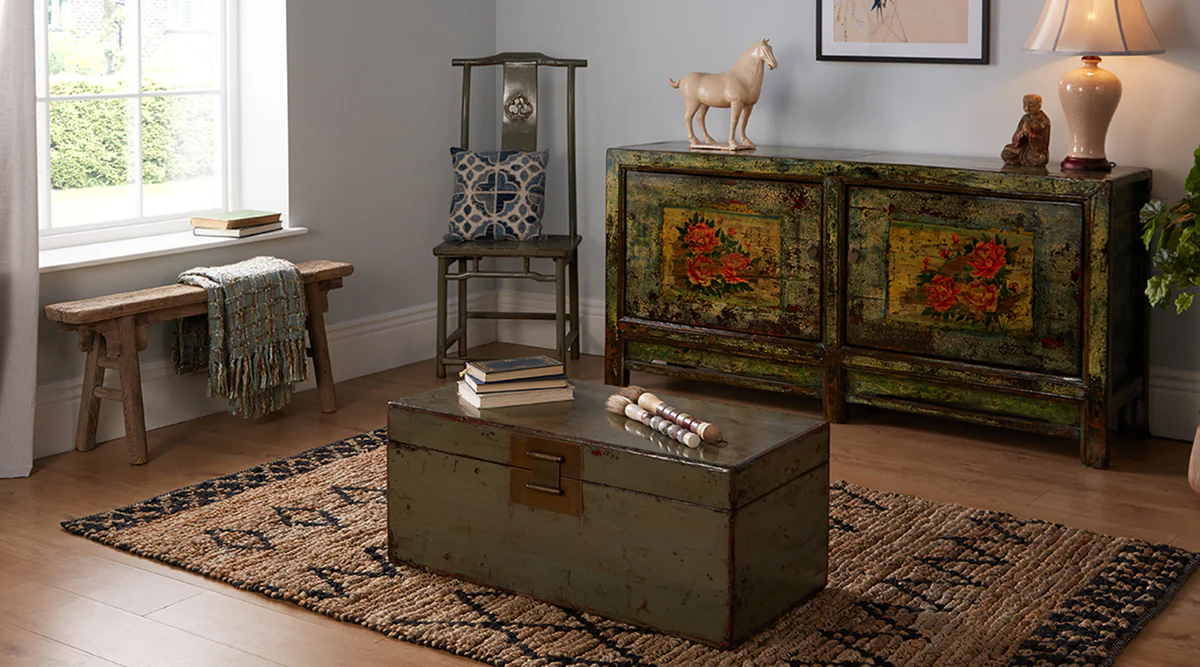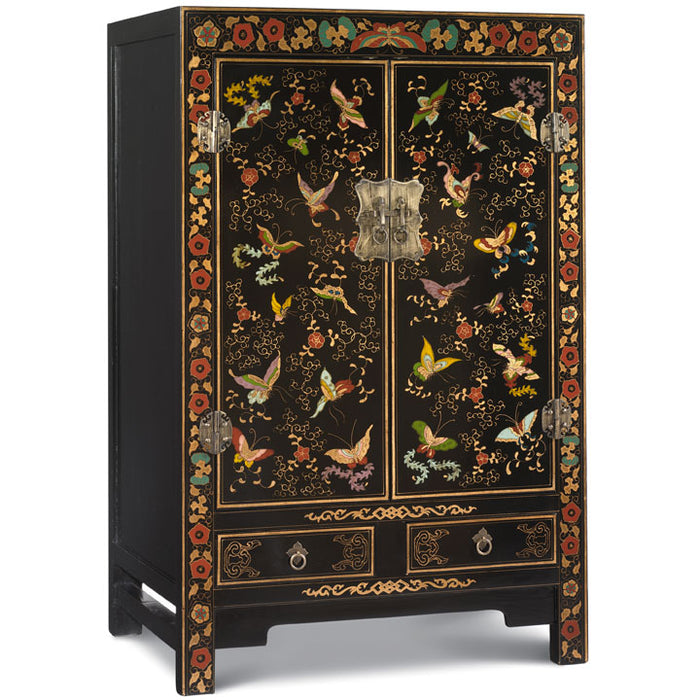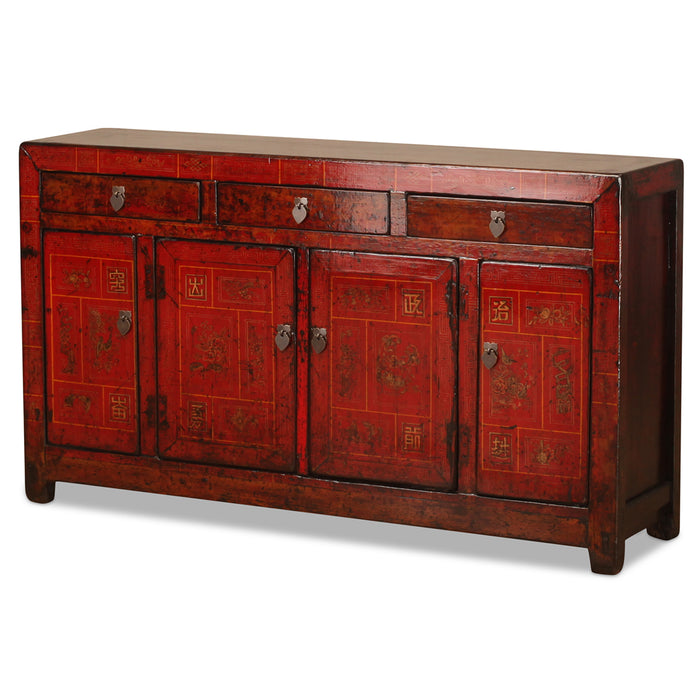
Time-Honoured Elegance: Exploring the Rich History of Chinese Lacquered Furniture
The chances are that when you think of Chinese furniture, you think of richly decorated pieces with a lustrous, glossy surface finish. This shiny coating is, in fact, lacquer; a hard coating which is applied to wood to give a distinctive glossy look. If, like the team here at Shimu, you love Chinese furniture, you probably don’t think much about the merits of lacquer, but instead appreciate antique furniture from China for its distinctive style and unique charm. However, lacquer is such an integral element of so many Chinese antiques that we thought it was time to explore what it is, how it’s made and applied, and where it originates from.
Lacquer vs. Varnish
Lacquer and varnish are often confused, but although they are often thought of as being the same type of finish, the two are very different. Lacquer and varnish are similar in that their shiny, durable surfaces are designed to give protection to wooden furniture and decorative objects such as jewellery boxes, but their origins are quite different.
Varnish is made from a combination of drying oil, thinner or solvent and resin. When mixed together, these ingredients combine to create a hard, clear solution which gives a thin layer of protection.

The lacquer used to give Chinese furniture its distinctive, rich and glossy finish is made from resin collected from Toxicodendron vernicifluum trees – their common name of Lacquer Tree is much easier to pronounce! - and applied in layers, with each layer applied as thinly as possible using a soft brush with long bristles. Lacquering is a highly skilled and respected process which is carried out by craftsmen with many years of experience who paint on the lacquer, layer upon layer, to achieve the desired finish.
Chinese lacquered furniture has been popular for centuries, largely because of lacquerware’s unique durability and ability to resist damage from water, acid or alkali substances, scratches and abrasion. It’s incredible to think that lacquer is so resilient that archaeologists have unearthed remarkably well-preserved lacquered objects from Iron Age tombs!
The History of Chinese Lacquerware
The history of Chinese lacquerware extends as far back as the Neolithic period but it was during the Shang Dynasty of c. 1600 – 1050 BCE that craftsmen began to develop more sophisticated ways to apply the lacquer. Over the following centuries the prominence of lacquerware began to develop, with lacquered vessels designed for ancestral and ceremonial offerings becoming increasingly valuable and sought-after. As a result, lacquer began to overtake bronze in importance as the process of lacquer application became more intricate; calling for the skills of specialised artisans to apply successive layers of decoration, inlay and lacquer.

The Tang Dynasty 618-906 saw the introduction of several new decorative techniques whereby craftsmen used sheets of gold or silver to create floral, animal and bird shapes which could be placed between layers of lacquer. In addition, new techniques such as lacquer carving would make their appearance at around this time, whilst the art of lacquering with inlaid mother of pearl would be redefined during the Song Dynasty of 960-1279.
Over the following centuries the skills of craftsmen developed and evolved to result in dazzling finishes, including engraving and filling with silver powder or gold leaf, and the introduction of finely carved and staggeringly intricate designs. Many of these highly skilled techniques can still be seen today in Chinese antique furniture and although the years begin to show in these beautiful pieces, lacquerware furniture looks as wonderful today as it always has.
Chinese Lacquered Furniture at Shimu
At Shimu we are incredibly proud to offer one of the largest ranges of Chinese antique lacquered furniture available in the UK. From richly decorated altar cabinets from Tibet to ornate wedding cabinets, and trunks and sideboards with lacquered finishes, our ever-changing selection includes stunning pieces which showcase perfectly the art of lacquering.
In addition, we also offer a range of newly made furniture which has been handmade using traditional joinery techniques. Many of the pieces in our new furniture collections have a lacquer finish, designed to replicate the elegance and quality of their antique counterparts.
We think the superb quality of craftsmanship and timeless elegance that defines Chinese lacquered furniture makes these stunning pieces of furniture perfect for inclusion in modern homes; providing a unique and stylish way to incorporate the beauty of traditional furniture design into today’s interiors.





Leave a comment